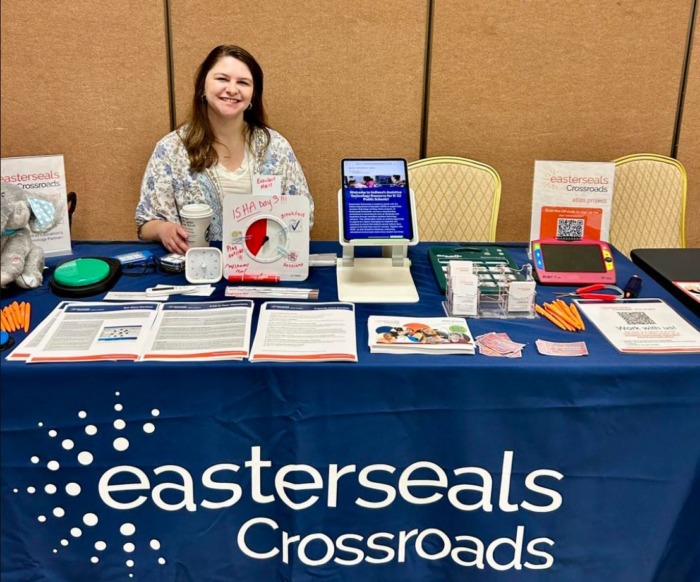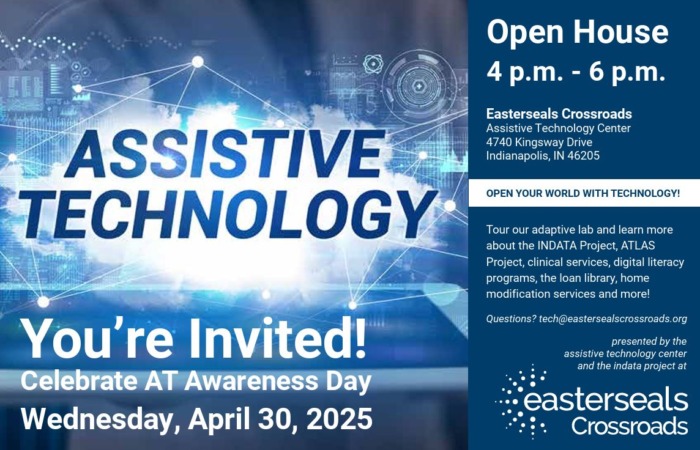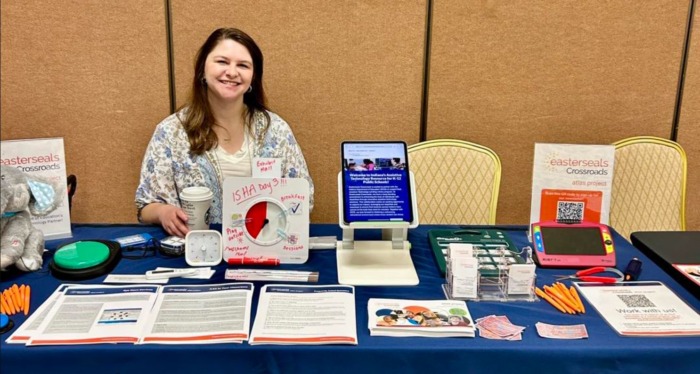
This year marks the Autism Society of America’s 60th anniversary of supporting people with autism through such efforts as April’s Autism Acceptance Month. (The organization followed other advocacy groups in changing “awareness” to “acceptance.”)
“I do believe most people are aware of what autism is,” said Samantha Edwards, an autistic content creator and neurodivergent life coach. “We’ve got the awareness and now we need the resources, we need the advocacy.”
Aside from the fact that one in 36 children in America have autism spectrum disorder, awareness is spreading through mainstream shows like the reality series Love on the Spectrum as well as the social media presence of openly autistic public figures like environmental activist Greta Thunberg.
To Raine Sims — an assistive technology specialist for autism and sensory needs at Easterseals Crossroads — the shift in terminology from awareness to acceptance makes sense, as “older students and adults are reclaiming autism as an identity, community and culture rather than simply a disorder.”
As the world moves beyond raising awareness toward promoting acceptance, the approach to serving people with autism is changing as well.
“We strive to be person-centric and listen closely to students about their unique priorities,” Sims said. “We want to give them the tools to communicate what they really need and want versus serving them according to the preconceived ideas of their needs.”
When it comes to the most beneficial tools, Sims said, “Educators still don’t realize how broad assistive technology is in scope. It could be something as simple as a schedule chart or something as high-tech as an AI notetaking device.”
Low to High-Tech Tools
For the school-aged autistic children she serves, Sims said their first instances of using assistive technology involve needing help with executive function skills such as following a schedule, managing their time and organizing their homework.
A common assistive technology solution here is a “first-then chart,” which can be as simple as pictures placed under the words “first” and “then.”

A more advanced type of AT solution is the notetaking tool Glean, which records class lectures or business meetings and uses AI to transcribe and/or summarize the recording and create multiple-choice questions based on the presentation material. This is an example of the person-centric tools Sims mentioned, as it allows people with autism to absorb information at their own pace and engage in the moment rather than missing content amid taking notes. It’s also geared toward the common autism-related issue of difficulty focusing and shifting attention.
Sims is a firsthand witness of the ways this technology works wonders for students with autism. She recalls how one student with dyslexia, which commonly co-occurs with autism, benefited from using the C-Pen.
“It was challenging for them to stay organized but also quickly read something,” Sims said. “The C-Pen helped the student independently take a test because scanning the pen over text read it aloud to them.”

The ATLAS Project
Connecting students with AT devices like the C-Pen is the crux of Sims’ work for Easterseals Crossroads’ ATLAS Project — a partnership with the Indiana Department of Education (IDOE) to provide assistive technology solutions for the state’s K-12 public schools.
To that end, ATLAS is building a no-cost Lending Library, which loans assistive technology devices, software and resource materials to school personnel at Indiana’s Local Education Agencies (LEAs). ATLAS loans out these items for a six-week trial/evaluation period. Borrowers may request equipment demonstrations and technical assistance to accompany the loans.

“We’re trying to grow our library and the services we provide to educators, whether that involves in-person consultations with students in need of assistive technology or professional development training sessions for teachers,” Sims said.
Later this month, as a tie-in with AT Awareness Day on April 30, people will be able to tour Easterseals Crossroads’ adaptive lab and discover how the INDATA Project, ATLAS Project, clinical services, digital literacy programs, loan library, home modification services and more are helping Hoosiers with autism and other disabilities lead fuller, more independent lives.

“Assistive technology changes so quickly that it’s impossible for educators to always have their finger completely on the pulse of the all the AT out there,” Sims said. “The members of the ATLAS Project are grateful and thrilled that we can provide information on the latest technology in development. In regard to students and adults with autism, they’re all unique, so we’re lucky to have solutions tailored to a wide variety of people.”


How can I get one for my nonverbal granddaughter . We have permanent guardianship.